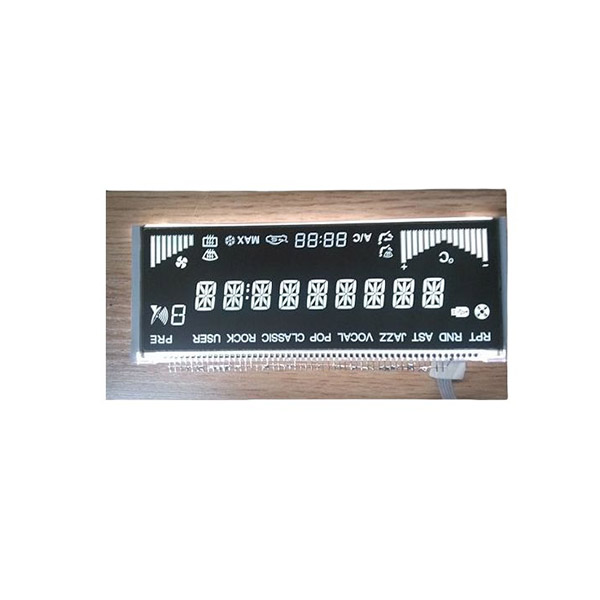In the automotive industry, the integration of technology into vehicle design has transformed how drivers interact with their cars. Among the various display technologies, black and white LCD screens have gained prominence, particularly in automobile instruments. These displays offer a blend of functionality, clarity, and efficiency that is essential for conveying critical information to drivers. This article delves into the characteristics, advantages, and applications of black and white LCD screens in automobile instruments.
The Basics of LCD Technology
What is an LCD?
Liquid Crystal Display (LCD) technology utilizes liquid crystals sandwiched between two layers of glass or plastic. By applying an electric current to these crystals, they can manipulate light to create images or text. In black and white LCDs, the display typically shows information in shades of black against a white or light background.
Types of Black and White LCDs
Black and white LCDs can be categorized into several types based on their construction and functionality:
TN (Twisted Nematic): This is one of the most common types of monochrome displays. It offers good response times but has limited viewing angles.
STN (Super Twisted Nematic): STN displays provide better viewing angles and contrast than TN displays, making them suitable for automotive applications.
FSTN (Film Compensated Super Twisted Nematic): FSTN displays enhance contrast and visibility in various lighting conditions, which is crucial for automotive use.

Advantages of Black and White LCD Screens
High Contrast and Readability
One of the primary benefits of black and white LCD screens is their high contrast ratio. The stark difference between black text and a white background ensures that information is easily readable, even in bright sunlight. This clarity is essential for safety, as drivers need to quickly interpret data from their instrument panels without distraction.
Low Power Consumption
Black and white LCDs are known for their energy efficiency. They consume significantly less power compared to color displays, which is particularly advantageous in automotive applications where battery life is critical. This low power consumption helps extend the life of the vehicle's electrical system while reducing overall energy costs.
Durability and Reliability
Automobile environments can be harsh, with exposure to extreme temperatures, vibrations, and moisture. Black and white LCDs are designed to withstand these conditions, making them a reliable choice for automotive instruments. Their robust construction ensures longevity, reducing the need for frequent replacements.

Applications in Automobile Instruments
Instrument Clusters
Black and white LCD screens are commonly used in instrument clusters to display vital information such as speed, fuel level, engine temperature, and warning indicators. The simplicity of monochrome displays allows for clear communication of critical data without overwhelming the driver with unnecessary details.
Navigation Systems
In addition to instrument clusters, black and white LCDs are utilized in navigation systems within vehicles. These displays provide essential route information, distance to destination, and turn-by-turn directions in a straightforward format that enhances usability.
Infotainment Systems
While many infotainment systems utilize color displays, some functions—such as basic audio controls or system status indicators—can effectively use black and white LCD screens. This approach simplifies the interface while providing essential information without distractions.

Design Considerations for Black and White LCDs
Size and Resolution
When selecting a black and white LCD for automotive applications, size and resolution are crucial factors:
Size: The display should be large enough to convey information clearly but compact enough to fit within the design constraints of the dashboard.
Resolution: Higher resolution screens provide sharper text and graphics, enhancing readability.
Backlighting Options
The effectiveness of an LCD screen can be significantly influenced by its backlighting:
Transmissive Displays: These require external light sources to be visible; they work well in well-lit environments.
Reflective Displays: These utilize ambient light for visibility; they are ideal for outdoor use.
Transflective Displays: Combining both transmissive and reflective properties allows these displays to perform well in varying lighting conditions.
Conclusion
Black and white LCD screens have established themselves as a vital component in automobile instruments due to their clarity, durability, low power consumption, and reliability under various conditions. As vehicles become more technologically advanced, these displays will continue to evolve alongside emerging technologies.
Understanding the benefits and applications of black and white LCD screens empowers manufacturers like Yicheng Optoelectronic Technology Co., Ltd., an innovative enterprise focused on producing high-quality LCD solutions for industrial control fields, to enhance vehicle instrumentation effectively. By prioritizing quality display technology, automakers can ensure that drivers receive essential information quickly and clearly—ultimately contributing to safer driving experiences.
In summary, whether utilized in instrument clusters or navigation systems, black and white LCD screens represent a practical choice that balances performance with aesthetic appeal—making them indispensable in modern automobiles.
Understanding Black and White LCD Technology: How It Works and Its Advantages


